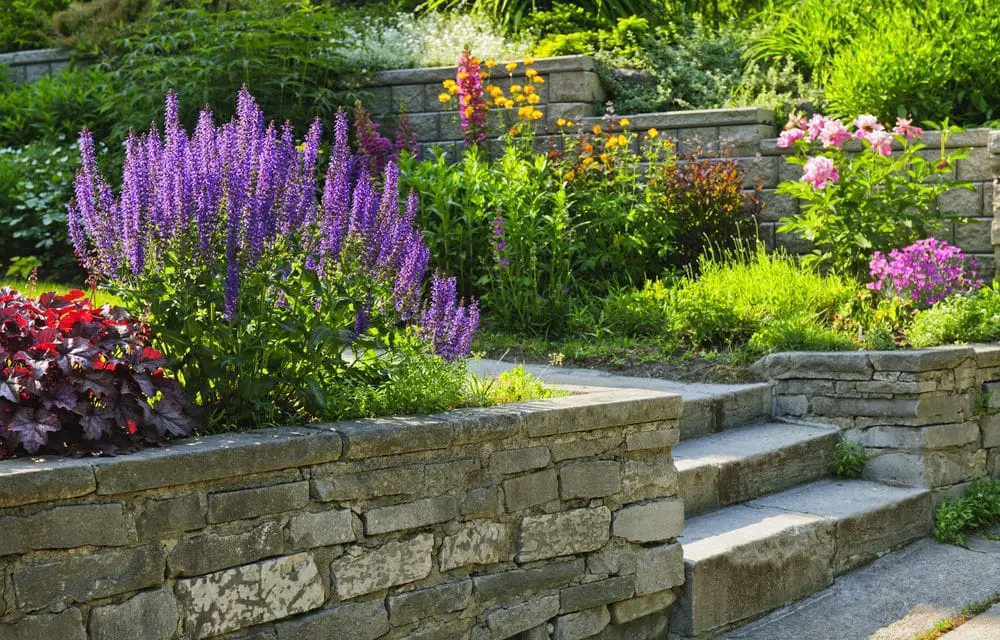Creating an eco-friendly garden not only benefits the environment but also provides a beautiful and healthy space for you to enjoy. Sustainable landscaping focuses on conserving resources, promoting biodiversity, and reducing waste. This guide will walk you through the steps to design and maintain an eco-friendly garden that aligns with nature.

Introduction to Sustainable Landscaping
Sustainable landscaping, also known as ecological or green landscaping, involves designing, creating, and maintaining a garden with minimal environmental impact. It prioritizes the use of native plants, water conservation, soil health, and the reduction of chemical inputs. This approach not only supports local ecosystems but also enhances the resilience and beauty of your garden.
1. Planning Your Eco-Friendly Garden
1.1. Assessing Your Space
- Description: Before you start planting, it’s essential to assess your garden space, including sunlight, soil type, and existing vegetation.
- How to Assess: Take note of the areas that receive full sun, partial shade, or full shade. Conduct a soil test to understand its composition and pH level.
1.2. Setting Goals
- Description: Define what you want to achieve with your eco-friendly garden. Your goals might include water conservation, attracting wildlife, or reducing maintenance.
- How to Set Goals: Make a list of your priorities and design your garden layout accordingly. Consider creating zones for different purposes, such as a rain garden or a pollinator habitat.
2. Choosing Native and Drought-Tolerant Plants
2.1. Benefits of Native Plants
- Description: Native plants are well-adapted to the local climate and soil conditions, making them easier to care for and beneficial to local wildlife.
- How to Choose: Research plants that are native to your region and suitable for your garden conditions. Local nurseries and extension services can provide valuable advice.
2.2. Selecting Drought-Tolerant Species
- Description: Drought-tolerant plants require less water, making them ideal for sustainable gardens.
- Examples: Some popular drought-tolerant plants include lavender, succulents, yarrow, and certain ornamental grasses.
3. Water Conservation Techniques
3.1. Rainwater Harvesting
- Description: Collecting and using rainwater reduces your reliance on municipal water and is a sustainable way to water your garden.
- How to Implement: Install rain barrels or a more elaborate rainwater harvesting system. Use the collected water to irrigate your plants.
3.2. Efficient Irrigation
- Description: Efficient irrigation methods ensure that your plants receive the water they need without wastage.
- How to Implement: Use drip irrigation or soaker hoses, which deliver water directly to the roots. Water in the early morning or late evening to minimize evaporation.
4. Soil Health and Mulching
4.1. Improving Soil Health
- Description: Healthy soil is the foundation of a sustainable garden. It supports plant growth and retains water and nutrients.
- How to Improve: Add organic matter such as compost or well-rotted manure to your soil. Practice crop rotation and avoid using chemical fertilizers.
4.2. Benefits of Mulching
- Description: Mulching helps retain soil moisture, suppress weeds, and improve soil structure.
- How to Mulch: Apply a layer of organic mulch, such as wood chips, straw, or leaves, around your plants. Keep mulch away from the plant stems to prevent rot.
5. Encouraging Biodiversity
5.1. Creating Wildlife Habitats
- Description: A diverse garden supports various forms of wildlife, including birds, bees, and butterflies.
- How to Create: Include a variety of plants that provide food and shelter for wildlife. Install birdhouses, bat boxes, and insect hotels.
5.2. Avoiding Pesticides
- Description: Reducing or eliminating the use of pesticides protects beneficial insects and other wildlife.
- How to Implement: Use natural pest control methods, such as attracting predatory insects, hand-picking pests, and using organic sprays like neem oil.
6. Reducing Waste
6.1. Composting
- Description: Composting organic waste reduces landfill usage and creates nutrient-rich soil for your garden.
- How to Compost: Set up a compost bin or pile in a convenient location. Add kitchen scraps, garden clippings, and other organic materials, turning the compost regularly.
6.2. Reusing and Recycling Materials
- Description: Incorporating reused and recycled materials into your garden design reduces waste and adds unique elements to your space.
- How to Implement: Use reclaimed wood for garden beds, repurpose old containers as planters, and incorporate recycled materials into garden structures.

Conclusion
Creating a sustainable, eco-friendly garden is a rewarding way to contribute to environmental conservation while enjoying a beautiful and functional outdoor space. By planning carefully, choosing the right plants, conserving water, maintaining soil health, encouraging biodiversity, and reducing waste, you can create a garden that thrives in harmony with nature. Embrace these practices to transform your garden into an eco-friendly haven.


